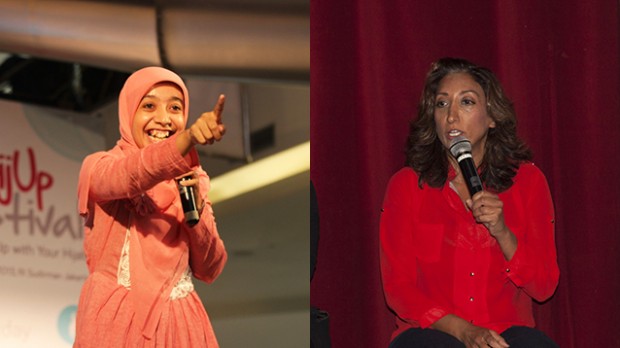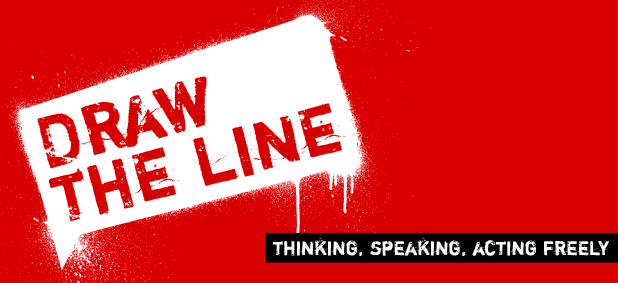18 Dec 2017 | Journalism Toolbox Arabic
[vc_row][vc_column][vc_custom_heading text=”
يواجه الصحفيون في المكسيك تهديدات من حكومة فاسدة وكارتيلات المخدّرات العنيفة، كما أنهم لا يمكنهم دائما الوثوق ببعض زملائهم الصحفيين، يكتب دنكان تاكر
“][vc_row_inner][vc_column_inner][vc_column_text]

شارك المئات من المتظاهرين في مسيرة صامتة في عام ٢٠١٠ لإدانة أعمال القتل والخطف ضد الصحفيين في المكسيك, John S. and James L. Knight/Flickr
[/vc_column_text][/vc_column_inner][/vc_row_inner][/vc_column][/vc_row][vc_row][vc_column][vc_column_text]
“آمل أن لا ترضخ الحكومة إلى إغراء التسلّط فتحجب خدمة الانترنت وتبدء في اعتقال النشطاء ” يقول المدوّن والناشط المكسيكي ألبرتو ايسكورسيا لمجلة “اندكس أون سنسورشيب” (مؤشر الرقابة). كان إيسكورسيا قد تلقّى للتو سلسلة من التهديدات بعد كتابة مقال عن الاضطرابات الأخيرة في البلاد. في اليوم التالي، تصاعدت التهديدات ضده، فبدأ يخطّط للفرار من البلاد، بعد أن شعر أنه محاصر ولا يوجد من يحميه من الخطر.
يشعر كثيرون بالقلق إزاء حالة حرية التعبير في المكسيك. فالركود الاقتصادي، وانهيار قيمة العملة الوطنية، والحرب الدموية ضد تجّار المخدّرات التي لا يبدو أن لها نهاية في الأفق، ووجود رئيس لا يحظى بشعبية كبيرة في الداخل بالإضافة الى صعود إدارة دونالد ترامب العدائية مؤخرّا الى سدّة الرئاسة في الولايات المتحدة الأمريكية، جارة المكسيك الى الشمال، كل هذا قد ولّد ضغوطات عديدة على البلاد في عام 2017.
يظل أحد أكبر مصادر التوّتر في المكسيك هو رئيس البلاد. فلقد جلبت السنوات الأربعة التي أمضاها إنريكه بينيا نييتو في منصبه تباطؤا في النمو الاقتصادي، وتصاعدا في العنف، وسلسلة من الفضائح المتعلّقة بالفساد. في يناير/ كانون الثاني من هذا العام، انزلق مستوى التأييد له إلى 12 نقطة مئوية فقط.
ولكن عندما حاول الصحفيون تغطية أخبار الرئيس ومفاعيل سياساته، تمت مواجهتهم بالقمع والترهيب. ففي بداية عام 2017، اندلعت احتجاجات واسعة بعد إعلان بينيا نييتو رفع سعر البنزين بنسبة 20 بالمئة. خلّفت المظاهرات التي استمرّت عدّة أيام، والتي تخلّلها مواجهات مع الشرطة وأعمال نهب وقطع الطرقات ما لا يقل عن ستة قتلى وأكثر من 1500 معتقل. وذكرت لجنة حماية الصحفيين أن الشرطة ضربت أو هددت أواعتقلت لفترة وجيزة ما لا يقل عن 19 صحفيا، كانوا يقومون بتغطية الاضطرابات في ولايات الشمال، مثل كواويلا وباخا كاليفورنيا.
في خضم هذه الأحداث، لم يتم حجب الأخبار فحسب، بل تم أيضا تلفيقها وفبركتها. انتشرت الهستيريا الجماعية في مدينة مكسيكو، فيما قامت أعداد هائلة من البوتات والحسابات المزيّفة على تويتر بالتحريض على العنف ونشر تقارير كاذبة عن مزيد من أعمال النهب، مما تسبب في إغلاق ما يقرب من 20 ألف من الشركات والمحلّات الصغيرة، وإن بشكل مؤقت.
[/vc_column_text][/vc_column][/vc_row][vc_row][vc_column width=”1/4″][/vc_column][vc_column width=”3/4″][/vc_column][/vc_row][vc_row][vc_column][vc_column_text]
“لم أر مدينة مكسيكو في مثل هذه الحالة، في حياتي”، يقول ايسكورسيا عبر الهاتف من منزله في العاصمة. “عدد قوّات الشرطة كان أكثر من المعتاد. كانت هناك طائرات هليكوبتر تحلق فوقنا كل ساعة وكان يمكنك سماع صفارات الانذار باستمرار. على الرغم من أنه لم تكن هناك أية أعمال نهب في هذا الجزء من المدينة، فان الناس كانوا يعتقدون بأنها تحدث في كل مكان “.
قام إيسكورسيا، بالتحقيق في استخدام بوتات التويتر في المكسيك على مدى السنوات السبع الماضية، وهو يرى أنه تم استعمال عددا من حسابات تويتر الوهمية لنشر الخوف ولتشويه صورة الاحتجاجات المشروعة ضد رفع أسعار البنزين والفساد الحكومي. فلقد حدّد ما لا يقل عن 485 حسابا وهميا قامت بتحريض الناس مرارا وتكرارا على “نهب أحد أفرع سوبرماركت وول مارت”، باستخدام وسم خاص.
“في البدء، تدعوا (الحسابات الوهمية) الناس لنهب المحلّات التجارية، ثم تطالب بأن يعاقب اللصوص وتدعوا الى نشر الجيش”، يوضح إيسكورسيا. ويضيف: “هذه قضية حساسة جدّا لأنها يمكن أن تؤدي إلى دعوات لفرض رقابة على الإنترنت أو اعتقال الناشطين”، مشيرا إلى أن الحكومة الحالية قد سبق وأن حاولت ولكن فشلت بتمرير تشريعات لحجب خدمة الإنترنت خلال “الأحداث التي تشكّل خطرا على الشعب أو الأمن القومي”.
بعد أيام من انتشار وسم “إنهب وول مارت”، كشف بينيتو رودريجيز، وهو هاكر مقيم في اسبانيا، لجريدة الفينانسيرو بأنه كان قد تلقّى أموالا لقاء استعمال مهاراته لنشر الوسم على شبكة الانترنت. وقال رودريجيز انه يعمل أحيانا لصالح الحكومة المكسيكية واعترف بأن الحكومة المكسيكية “ربما” كانت أحد الأطراف التي دفعت له لقاء التحريض على النهب.
لقد حامت الشبهات منذ وقت طويل حول إدارة بينيا نييتو بما يتعلّق باستخدام البوتات والحسابات الوهمية لأغراض سياسية. في مقابلة مع بلومبرغ في العام الماضي، كشف الهاكر الكولومبي أندريس سيبولفيدا أنه تلقى أموالا لقاء العمل على التأثير على نتيجة تسعة انتخابات رئاسية عبر أمريكا اللاتينية منذ عام 2005 والتي شملت انتخابات المكسيك عام 2012، حيث ادّعى ان فريق عمل بينيا نييتو كان قد دفع له لاختراق اتصالات مرشحيّن هما من أشد منافسي بينيا نييتو وقيادة جيش من 30 ألف من بوتات التويتر للتلاعب بالمواضيع الأكثر تداولا ومهاجمة المرّشحين الآخرين. اصدر مكتب الرئيس بينيا نييتو لاحقا بيانا نفى فيه وجود أي علاقة له مع سيبولفيدا.
يتعرّض الصحفيون المكسيكيون للتهديد من الكارتيلات العنيفة أيضا. أثناء قيامه بجمع المعلومات من أجل كتابه “ناركوبيريوديسمو” (الصحافة المتمحورة حول كارتيلات المخدّرات) فوجئ مؤسس صحيفة ريودوس، خافيير فالديز، بكم هو شائع أن تقوم الكارتيلات باختراق غرف الأخبار في الصحف المحلية وزرع جواسيس ومخبرين فيها.
وقال فالديز لإندكس “ان الصحافة الجادة والحفاظ على الأخلاقيات هي مسألة مهمة جدا في أوقات الصراع، ولكن للأسف نجد هناك صحفيين متورطين مع الناركوس”، في إشارة الى كارتيلات المخدّرات. “لقد جعل هذا عملنا أكثر تعقيدا، والآن علينا أن نحمي أنفسنا من السياسيين والناركوس وحتى الصحفيين الآخرين”.
يعرف فالديز تماما مخاطر تهديد الأقوياء المتنفّذين والعصابات المسيطرة. يقع مقر صحيفة ريودوس في سينالوا، وهي ولاية مضطربة حيث ينهض الاقتصاد على تجارة المخدرات. وأضاف “في عام 2009 القى شخص ما قنبلة يدوية على مكتب ريودوس، لكنها لم تسبب سوى أضرار مادية. وتلقّيت مكالمات هاتفية تأمرني بأن أتوقف عن التحقيق في بعض جرائم القتل أو في جرائم زعماء عصابات المخدرات. واضطررت الى حجب معلومات هامة من النشر لأنه كان من المحتمل بأن يقوموا بقتل عائلتي لو قمت بالإشارة اليها. وبالفعل فقد قتلت مصادر أعرفها أو تم خطفهم واخفائهم … الحكومة لم تكترث اطلاقا. إنها لا تفعل شيئا لحمايتك. لقد كان هناك الكثير من هذه الحالات وهي لا زالت تحدث “.
على الرغم من أن الصحفيين المكسيكيين يواجهون العديد من المشاكل المشتركة، يأسف فالديز لقلّة الشعور بالتضامن بينهم وضعف الدعم الذي يحظون به من المجتمع الأوسع. ويخشى فالديز بأن تتكثّف الضغوط على الصحفيين فيما تستعد المكسيك للانتخابات الرئاسية في العام القادم، في خضم أزمة اقتصادية مستمرّة، مما سيكون له عواقب خطيرة على البلاد كما يقول.
ويحذر فالديز بأن “المخاطر التي تواجه المجتمع والديمقراطية هي خطيرة للغاية.” ويضيف: “للصحافة تأثير كبير على العملية الديمقراطية والوعي الاجتماعي، ولكن عندما نعمل تحت كم هائل من التهديدات فلا يكون عملنا أبدا على الوجه الأكمل المطلوب”.
يقول فالديز أنه اذا لم يحدث تغيير جذري، فستواجه المكسيك والصحفيون فيها مستقبلا مظلما، وأضاف: “لا أرى المجتمع يتعاضد مع الصحفيين أو يحميهم. في ريودوس لا نتلقى أي دعم من قبل أصحاب الأعمال لتمويل المشاريع. إذا أفلسنا وأغلقنا أبوابنا فإن أحدا لن يفعل أي شيء [للمساعدة]. ليس لدينا حلفاء. نحن بحاجة إلى مزيد من الدعايات والاشتراكات والدعم المعنوي ولكننا الآن متروكون لوحدنا.ولن نستطيع أن نستمر لفترة طويلة في هذه الظروف.”
يتشارك إسكورسيا، الذي يواجه حالة صعبة مماثلة، هذا الشعور بالخطر الداهم، ولكنه قرّر التحدّي. بعد التهديدات الأخيرة الموّجهّة ضده، كتب على حسابه على تويتر: “هذا هو بلدنا، ووطننا، ومستقبلنا، وفقط من خلال بناء الشبكات يمكننا الحفاظ عليه. قول الحقيقة، وتوحيد الناس، وخلق وسائل إعلامية جديدة ودعم تلك منها القائمة، ونشر ما يريدون التكتّم عليه، هذه هي الطريقة الحقيقية التي يمكننا أن نساعد من خلالها. “
[/vc_column_text][/vc_column][/vc_row][vc_row][vc_column][vc_column_text]
يمكنكم الاستماع إلى مقابلة مع دنكان تاكر من خلال بودكاست “اندكس أون سنسورشيب” (مؤشر الرقابة) على سوندكلود،
soundcloud.com/indexmagazine
دنكان تاكر هو صحفي مستقل يقيم في غوادالاخارا، المكسيك
*ظهر هذا المقال أولا في مجلّة “اندكس أون سنسورشيب” بتاريخ ١٢ أبريل/نيسان ٢٠١٧
[/vc_column_text][/vc_column][/vc_row][vc_row content_placement=”top”][vc_column width=”1/3″][vc_custom_heading text=”The big squeeze” font_container=”tag:p|font_size:24|text_align:left” link=”url:https%3A%2F%2Fwww.indexoncensorship.org%2F2017%2F12%2Fwhat-price-protest%2F|||”][vc_column_text]The spring 2017 issue of Index on Censorship magazine looks at multi-directional squeezes on freedom of speech around the world.
Also in the issue: newly translated fiction from Karim Miské, columns from Spitting Image creator Roger Law and former UK attorney general Dominic Grieve, and a special focus on Poland.[/vc_column_text][/vc_column][vc_column width=”1/3″][vc_single_image image=”88803″ img_size=”medium” alignment=”center” onclick=”custom_link” link=”https://www.indexoncensorship.org/2017/12/what-price-protest/”][/vc_column][vc_column width=”1/3″ css=”.vc_custom_1481888488328{padding-bottom: 50px !important;}”][vc_custom_heading text=”Subscribe” font_container=”tag:p|font_size:24|text_align:left” link=”url:https%3A%2F%2Fwww.indexoncensorship.org%2Fsubscribe%2F|||”][vc_column_text]In print, online. In your mailbox, on your iPad.
Subscription options from £18 or just £1.49 in the App Store for a digital issue.
Every subscriber helps support Index on Censorship’s projects around the world.
 SUBSCRIBE NOW[/vc_column_text][/vc_column][/vc_row]
SUBSCRIBE NOW[/vc_column_text][/vc_column][/vc_row]
15 Jun 2017 | Digital Freedom, Mapping Media Freedom, Netherlands, News and features
[vc_row][vc_column][vc_column_text]

Dutch journalists launched a campaign to pressure advertisers into reconsidering advertising on sites that denigrate women.
A petition urging advertisers to withdraw their ads from provocative right-wing blog GeenStijl, shook up The Netherlands last month. About 150 women journalists and celebrities signed an open letter after a post that lead to a storm of sexual harassment and rape threats towards a female journalist. A few large companies and government institutions have so far pulled out their adverts.
The first time Loes Reijmer’s picture appeared on the front page of GeenStijl, in March 2017, she had just written a piece for her newspaper De Volkskrant about the reasons behind and the consequences of online sexual harassment of women.
In the article, she explained how blogs and social media groups are increasingly harassing women, for example by posting nude photos without their consent. She mentioned GeenStijl as the one Dutch example of a website thriving on sexist, racist and humiliating content.
GeenStijl, a popular and controversial website owned by Telegraaf Media Group, was quick to answer to Reijmer’s critical article. The next day her headshot appeared on the front page, accompanied by the text: ‘This is Loes Reijmer. Would you do her?’ A storm of sexist comments followed, including rape threats.
In April, daily NRC-columnist Rosanne Herzberger added fuel to the fire by writing a column questioning GeenStijl’s credibility. She went one step further and urged GeenStijl’s advertisers, some of the biggest companies in the country, to rethink spending their money on the site.
“The question is, which companies are making content like this possible?” Herzberger wrote. She mentioned companies like TUI travels, McDonald’s, Renault, Rabobank, Dutch theme park De Efteling and even the Dutch tax service and the Ministry of Defense.
GeenStijl has a reach of 1.2 million unique viewers per month, which makes it one of the biggest online media outlets in the country. Its videoblog Dumpert.nl has an even wider reach, 2.2 million views per month.
“Humiliating women is big business,” Herzberger stated firmly. Her column was widely spread and shared on social media, and lead to many companies to actually reconsider their advertising choices.
A couple of days later GeenStijl reposted the picture of Loes Reijmer with now the text: “Would you do her? Tell us how!”, followed by even more threatening comments by GeenStijl readers.
This is when dailies Volkskrant and NRC joined forces and published an open letter addressed to the advertisers. “Dear advertisers,” it read. “You are paying for a website where sexism and racism is the norm, not the exception.” About 150 women, from celebrities to journalists, signed the letter.
The campaign was inspired by the American organisation Sleeping Giant that keeps track of companies whose adverts appear on the alt-right website Bartbreit.
Journalists in The Netherlands are increasingly experiencing harassment and threats, a recently published investigation by the Dutch Union for Journalists (NVJ) showed. More than half (61 percent) of all (638) questioned Dutch journalists have been threatened physically or via social media at some point in their career, 22 percent even on a monthly basis. Amnesty International called the Dutch numbers “worrying”.
Volkskrant’s own ombudswoman, Annieke Kranenberg, believes it is a worrying trend. In an op-ed in De Volkskrant she stated that being a target of sexual intimidation and threats online could lead to self-censorship.
She asked several Volkskrant journalists about their experiences and many admitted they are suffering from self-censorship. “I always expect to receive negative comments, but the comments on GeenStijl are the worst, the most hateful you can get,” one journalist, who remained anonymous, told her. “The reality is that I do think twice before I write about something sensitive.”
Even the journalists that don’t have experience with self-censorship find themselves obstructed in doing their jobs. When they have been smeared by GeenStijl, they notice the articles in which they have been portrait negatively, keep coming up in the search engines. “I’m bothered by that,” one journalist said. “People Google your name before they say yes to an interview request.”
Online harassment against female journalists and women, in general, is not just a problem in The Netherlands, ombudswoman Annieke Kranenberg argued. “Worldwide it has an effect on press freedom,” she wrote. She referred to an essay by the American journalist Amanda Hess in 2014: Why women aren’t welcome on the internet. The amounts of sexist and threatening messages women receive online “are an assault on women’s careers, their psychological bandwidth, and their freedom to live online,” Hess stated.
OSCE’s media freedom spokesperson Dunja Mijatovic published a report on the topic in 2015. She concluded that female journalists are disproportionately affected by online hate speech. Mijatovic recommended that media companies themselves could play a role in changing this discourse by working on better on equality on the work floor. Media companies should also publicly stand up more against online hate speech, and they must ensure psychological and legal support for their journalists, Mijatovic argued.
GeenStijl has fired back to the open letter. They argue that dailies De Volkskrant and NRC have crossed a line by publishing such a threat and that by doing so they are themselves restricting freedom of expression.[/vc_column_text][/vc_column][/vc_row][vc_row full_width=”stretch_row_content_no_spaces” content_placement=”middle”][vc_column][vc_single_image image=”91122″ img_size=”full” alignment=”center” onclick=”custom_link” link=”https://www.indexoncensorship.org/2017/05/stand-up-for-satire/”][/vc_column][/vc_row]
12 Apr 2016 | Awards, mobile
Indonesian comedian Sakdiyah Ma’ruf, a nominee for the 2016 Index on Censorship Freedom of Expression Award for arts, was born to conservative Muslim family in Java and went on to become one of very few female stand-up comedians in the country to appear on national TV.
British comedian Shazia Mirza, the host of this year’s awards, talks to her about tackling no-go subjects, trying to win family approval, and how the stand-up scene is growing for women in Indonesia.

Sakdiyah Ma’ruf (left) and Shazia Mirza (right)
SHAZIA: Have your parents come to watch you do stand-up?
SAKDIYAH: My parents came to one of my shows once. It was in 2012 in one of the biggest theatres in Jakarta. I invited them to the show because it was held in a “dignified” building. I wanted to help my parents, and especially my dad, see that I was doing a “dignified” job.
I was very nervous. It was a full house. But I didn’t care whether the audience liked me or not, as long as I could get at least silent approval from my dad.
Since the show, my dad has supported me in my career as a comedian – not fully perhaps – but from this moment on, he knew that stand-up was something I did and would continue to do – in addition to the other “real jobs” I have.
I remember my parents saying they were pretty nervous about how the audience would respond to me. Perhaps my dad thought he could accept what I was doing if I gained approval from at least half of the audience.
The truth is that it isn’t always easy to get out of the house to perform. In June 2015 I was invited to open for a good friend of mine who is one of the biggest stand-up comics in Indonesia. He called me in April for the gig and it took me almost a month just to craft the right sentence to ask for my dad’s permission to perform.
SHAZIA: Do you say exactly what you want to? Or do you think: “No I can’t say that, people might get upset”
SAKDIYAH: The truth is that I rarely say exactly what I want to. I mean, can you imagine expressing all those voices in your head to the audience?
I say what I believe in; what I have experienced; what I am concerned about; what I like; what I don’t like; what I’m angry about… For me, comedy is always about telling the truth. You can’t be genuinely funny without being completely honest with yourself and your audience.
But I do self-censor, I self-censor all the time! I’m not afraid to talk about taboo topics like religion, race relation, a bit of sex etc – but only if it helps me to be honest with myself and my audience to be honest with themselves. I make sure I craft my jokes on these topics in a way that is truly funny; otherwise I’ll just sound like another girl complaining about how unfair life is.
I also make sure I’m being fair. I fact-check before I talk about something, so that I don’t just make things worse.
SHAZIA: Are you the only woman in Indonesia doing stand-up?
SAKDIYAH: No, of course not. I was the first, but the number is now growing. Every year there are new female stand-up comics performing on TV or participating in competitions.
SHAZIA: Do you feel pressure to talk about “heavy” subjects, like Islamophobia and terrorism, in your comedy? Or do you prefer to talk about lighter things sometimes – like shopping, dating, going on holidays.
SAKDIYAH: I want to talk about the issues that matter to me, things I can relate to, things that are part of who I am and what I have experienced.
I love talking about Muslims and the way they practice and interpret their religion. I talk about Islamophobia, violence towards women, the idea and construction of femininity and masculinity, my ethnicity.
Yeah, sometimes I feel such pressure to talk about “heavy” topics, but for what it’s worth, I think there is no such thing as a “light” topic in comedy. With a great comedian, even jokes about a refrigerator can bring new insights on humanity.
And I guess this is what is so beautiful about comedy: it helps us get to know who we are who others are as well. Every individual has multiple identities. I have been perceived as this Muslim girl fighting against fundamentalism through her comedy. While this is true, I do not want to just be seen as some kind of a “comedy jihadist” fighting against fundamentalists. I have layers to my identity, just like everybody else.
SHAZIA: Do you receive letters and emails from people who have seen your performances? What kind of things do they say? What do women say?
SAKDIYAH: Yes, I do. A woman once asked me whether I am a “true” Muslim. Perhaps she considered my jokes too daring or inappropriate for a Muslim woman to tell. She asked me all these questions about whether I really wear the hijab every day and whether I pray five times a day.
I like getting these kinds of responses. I feel like these people genuinely care about me or at least about Muslim women in general.
28 Jan 2015 | Draw the Line, mobile, Youth Board

Censorship, and the degree to which we self-censor, is becoming an increasingly difficult, yet pressing and vitally important, topic of debate amongst an ever-growing international community.
Now, in the internet age, it has never been easier to connect and communicate with so many different people from all across the world. With these wide reaching forms of communication, and various people calling for censorship at different levels, the extent to which offence is considered an acceptable and fundamental part of free speech, has been called into question.
In the wake of the Charlie Hebdo killings, some world leaders have spoken publicly against self-censorship. Australian Prime Minister Tony Abbot urged media in the country to not resort to self-censorship. Some believe that certain groups, communities or organisations should be exempt from satire, criticism or insult. Others might argue that without the right to offend, a proper line of communication can never truly be attained, that no group should be exempt, and that people have the right to offend and be offended, but not to resort to violence and extremism.
This poses the question: is causing offence, and the ability to be offended, a fundamental part of freedom of expression? And, if we remove the right to offend, does this then close down the space for free and open debate?
Tweet your thoughts to #IndexDrawtheLine to get involved in the debate.
This article was published on 28 January 2015 at indexoncensorship.org

![]() SUBSCRIBE NOW[/vc_column_text][/vc_column][/vc_row]
SUBSCRIBE NOW[/vc_column_text][/vc_column][/vc_row]


